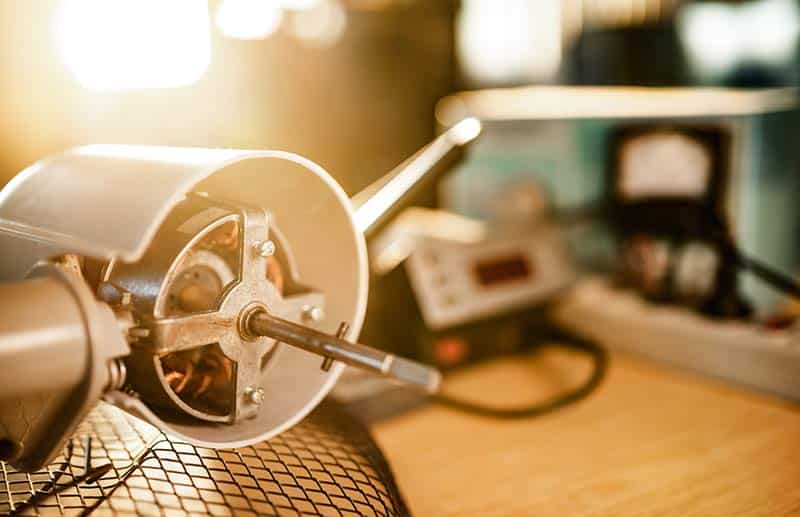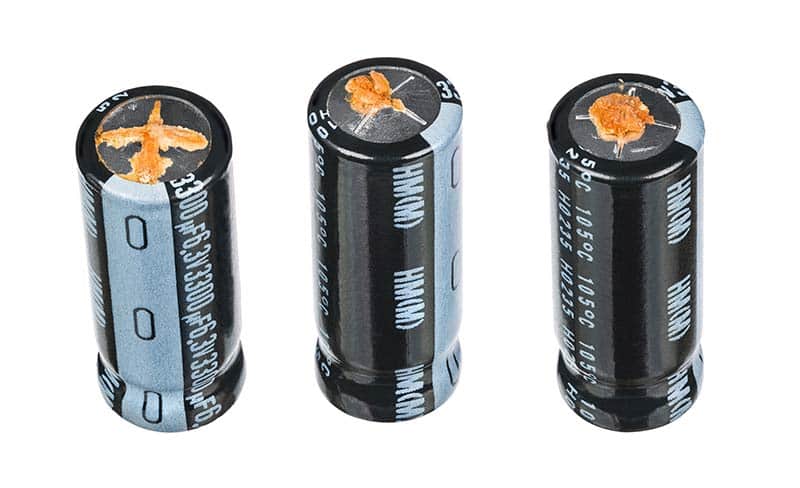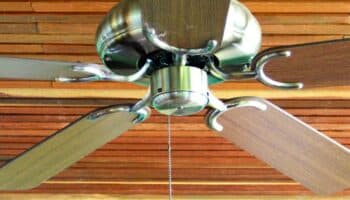Is your whole house fan not working? The capacitor might need urgent replacement. Here are all 6 known causes & fixes.
Ever since whole house fans were invented, they’ve become the standard alternative to AC units when it comes to household cooling solutions.
Unless you have any restrictions (such as someone living in the attic), there’s virtually no reason not to opt for owning a whole house fan. Especially considering the sky-high electric rates these days.
That said, as wonderful as whole house fans are, they’re not fail-proof. When your whole house fan is acting up, there are several things that can be to blame, from a broken motor to a faulty capacitor.
Whatever the case, one thing’s for sure: you need to find a way to fix the problem as soon as possible; however, to do it, you must know exactly what to look for.
Below, I’ve prepared a list where you’ll find the most common causes for a whole house fan not working and the easiest steps you can take to address each one.
Ready to get your whole house fan back to normal? Let’s go!
Fixing a Faulty Whole House Fan
The first thing I want to do when your whole house fan is not working is to put your mind at ease. Whatever the problem with your appliance, there’s always a good chance you can fix it without struggling too much.
More often than not, the malfunction is due to some loose wires or an insufficiently oiled bearing, both of which can be addressed in the blink of an eye.
Here are 6 reasons why your whole house fan is not working:
- A broken motor.
- Overheating.
- An insufficiently oiled bearing.
- Loose wires.
- A faulty capacitor.
- A broken thermostat.
#1 A Broken Motor
The first thing I want us to consider when your whole house fan is not working is the possibility of a broken motor.
Damaging your appliance’s motor is easier than you think. In fact, excessive stress coming from damaged fan blades, loose wires, or an insufficiently oiled bearing can do the motor in.

In my experience, if your whole house fan is brand new, we can also consider the possibility of a factory defect, but if it’s not, the problem definitely lies elsewhere.
Solution: To fix the issue, you must access your whole house fan to replace the motor. Please follow the steps below:
- Switch off the breakers supplying electricity to your whole house fan.
- Locate the screws holding the outer panel vent in place, and undo them with a screwdriver.
- Remove the vent panel.
- Remove the fan.
- Locate the motor and unscrew it carefully.
- Place the motor somewhere that allows you to work on it comfortably.
- Replace the motor if necessary.
It’s important to test the motor before buying a new one, as there may only be minor damage to it. Provided that it’s a total loss, and you’re a visual person like me, there are tons of online videos you can check out and follow along step by step.
#2 Overheating
Overheating can happen for several reasons and can easily explain why your whole house fan isn’t working.
Being your whole house fan a temperature regulating appliance, ensuring that it remains cool enough to operate normally at all times is essential to preventing any problems from arising.
If your whole house fan is not working, chances are one or several of its internal components are struggling to recirculate air properly.
For example, let’s say that your fan blades are damaged. Damaged fan blades can create excessive air resistance while spinning, which can overwork the motor and result in high temperatures.
If you combine damaged fan blades with an insufficiently oiled bearing, you have a recipe for disaster.
It is of the utmost importance that, before using your whole house fan, you ensure that every single component is in the best possible condition.
Solution: While there are no general rules on how often you should check your whole house fan’s components, my usual advice is to do it at least every couple of months or as soon as you detect any anomalies.
You can follow the steps from the previous point to gain comfortable access to your whole house fan’s parts for inspection.
#3 An Insufficiently Oiled Bearing
Your whole house fan might look like an overly complicated house cooling solution, and while the wiring and overall electrical setup can be a bit confusing, I find that most of its moving parts, like the bearing, are just like any other you’d find in simpler household appliances.

Fans work by making their motor spin blades around a bearing that allows for axis rotation and air circulation. Being the bearing so essential to the unit’s range of motion, ensuring it’s always well-oiled is vital.
Failing to give the bearing proper maintenance can result in overheating and premature motor malfunction. So, if your whole house fan is not working, chances are you have to stop by the hardware store and get a new can of motor oil.
Solution: The exact process will vary from model to model and from manufacturer to manufacturer, but the broad strokes should be the same for most whole house fan bearings.
Please follow the steps from point #1 to expose the motor and the bearing. Once you have comfortable access to both, you’ll see a small oil intake where you can pour the lubricant.
You want to add oil to your bearing at least once every two years, but if you detect any malfunctions indicating that the part needs to be topped up sooner, please do not hesitate to do so.
#4 Loose Wires
If your whole house fan is not working, looking “under the hood” and searching for anything abnormal in the wiring is a great idea.
Solution: Please follow the steps from point #1 to gain comfortable access to your whole house fan’s wiring.
Identifying a loose or broken cable should not be too difficult, but having your whole house fan’s wiring diagram handy can make things much easier for you.
If you find anything that needs to be reattached, you can try to do it yourself, but do not hesitate to call a professional if you feel doubtful or unsafe.
#5 A Faulty Capacitor
A whole house fan with a broken capacitor is like a car with a flooded motor; no matter what you do or try, it won’t start.

Capacitors are solely responsible for controlling your motor and allowing it to communicate with the fan blades so that they spin and recirculate air inside your home.
If your whole house fan is not working, and none of the solutions above have worked out for you, there’s a very good chance that the capacitor needs urgent replacing.
Solution: You know the drill. Just follow the steps from point #1 to gain comfortable access to the capacitor, and test it with a multimeter if you have one.
Remember that if you get any readings on the meter, the part is fine, and the problem lies elsewhere, But if the meter’s screen fails to react when in contact with the capacitor, the component is dead and needs replacing.
#6 A Broken Thermostat
Lastly, let’s take a look at your thermostat.
If you’ve ever had any other temperature-related appliance fail, you know what the thermostat does. If so, please skip down to the solution, but if you’ve never encountered a thermostat problem before, let me tell you a little about the component.
Your thermostat is solely responsible for sensing and regulating the temperature inside your whole house fan. When the components are running too hot, it’s the thermostat that tells the appliance to shut off temporarily.
From what I’ve seen, if your whole house fan is not working, there’s a good chance that the thermostat is damaged, thus rendering the unit unresponsive and unable to activate itself as a safety countermeasure.
Solution: Provided that you’ve tried all the solutions above, you already have comfortable access to all your whole house fan’s internal components, so all you need to do now is locate the thermostat and test it for continuity with your multimeter.
When Should You Call a Pro?
If your warranty is still active, and you don’t mind waiting a couple of days or weeks to have your manufacturer send in a technician to look at the appliance, by all means, go ahead and call them.
Unless otherwise specified, they should fix your whole house fan for you at no cost.
Provided that you’re no longer under coverage but feel capable enough to try and do your own repairs, knock yourself out. You’ll save some money and a considerable amount of time.
That said, there’s no shame in asking for help.
Calling a professional when your warranty has expired will cost you some money, but you can’t put a price on your safety. Please stop and let the technicians work if you ever feel unsafe or doubtful during the DIY process.
Conclusion
Having your whole house fan stop working can be very inconvenient – especially during a very hot season.
Luckily, as you’ve learned on this piece, there’s a very good chance that all you need to do to get the unit back to normal is oil your fan bearing regularly, check your blades for damage, and look for any loose or broken wires that need reattaching.
Remember, continuous and adequate maintenance of your whole house fan will keep it working perfectly and extend its lifespan significantly.
Thank you for reading. If you found this article useful, please check out our other resources and free guides below and consider subscribing to our newsletter.
Stay cool!
-Craig.








